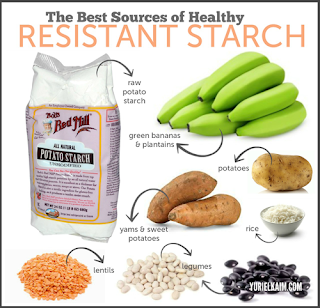Putting Up Some Resistance
It’s hard to believe but you can actually eat some foods that manage to avoid digestion by passing right through the small intestine. The small intestine is where most of the nutrients in food are absorbed into the body. The large intestine is where water is added to the digested food not eaten and the mixture is shuttled out of the body through natural processes.
You may be asking how starch can be healthy if it by-passes the part of the digestive system that absorbs nutrients. The answer lies in the benefits of dietary fiber. This particular kind of starch found in certain foods can aid digestion by promoting regularity and reducing the risk of developing certain cancers associated with low fiber diets.
What Kind of Fight Is This?
There are four categories of these starches. This is just further proof of the sophisticated complexity of nutrition and its relationship to the human body. The four categories are as follows.
- RS1 starch is the kind of starch in foods that literally can’t be accessed by the body because it’s hiding under cover. For example, beans with shells, unprocessed whole grains, and various kinds of seeds fit into this category.
- RS2 is the starch found in certain foods naturally that is not digestible by the human body. In this category foods like unripe bananas and uncooked potatoes are included.
- RS3 starch is formed when foods containing starch are cooked and then cooled. A good example is rice.
- RS4 starch is man-made starch.
Resistant starches should be a part of everyone’s diet because it is a healthy carbohydrate.
To stay healthy, your diet must include the right balance of fats, proteins, and carbohydrates. But research has shown that not all nutrients are equal. Resistant types of starches can improve colon health and do not increase blood glucose. In other words, reaching for a bowl of oatmeal is better for you than eating two slices of white bread even though both are carbohydrates.
The Many Benefits of Resisting
Since these types of starches do not raise blood glucose, they have a low glycemic index. This means these kinds of starches not only improve digestion, but they can be included in special diets including those for weight loss and diabetes management. In addition, low glycemic foods do not cause blood sugar spikes leading to food cravings or energy lapses.
Resistant types of starches can be easily incorporated into the diet as whole foods such as cooked oatmeal or beans, or as a recipe ingredient like barley or lentils.
You will be hearing more and more about the resistant starches because it is simply an excellent nutrient essential to a good diet.

No comments:
Post a Comment
Note: Only a member of this blog may post a comment.